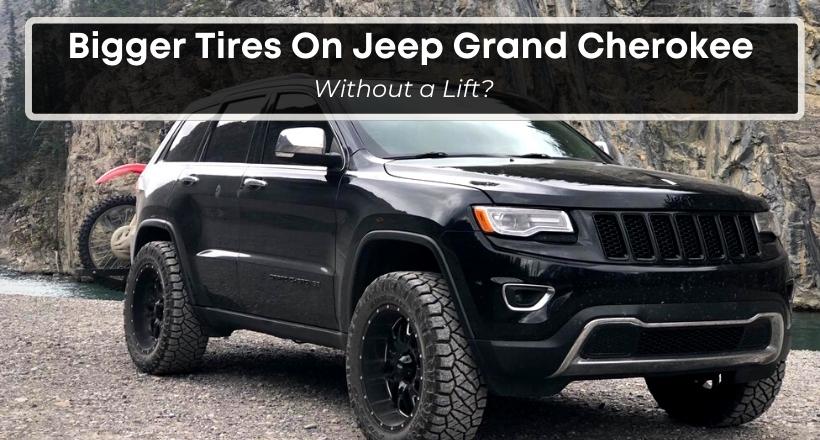Short Answer
The 285/50R20, 265/65R18, and 245/70R16 are the popular bigger tires in Grand Cherokees that don’t require any lift. Generally, you can fit tires 10% bigger than the stock size without any issue if the offset + bolt pattern are compatible.
The Jeep Grand Cherokee is a capable SUV that can make any off-road adventure comfortable.
But you can enhance that comfort level even more by increasing the ground clearance.
Although stock Grand Cherokee tires provide sufficient clearance for highways and city roads, things change when you go off the road.
Best Tires for Jeep Grand Cherokee
- Michelin Latitude Tour HP – 285/50R20 tire for Jeep Grand Cherokee
- Goodyear Wrangler Fortitude HT – 265/65R18 tire for Jeep Grand Cherokee
- Mastercraft Courser AXT2 – 245/70R16 tire for Jeep Grand Cherokee
- Evoluxx Capricorn 4X4 HP – 255/70R17 tire for Jeep Grand Cherokee
There you’ll be crossing water bodies or traversing through rocks/logs. And will require extra clearance to drive smoothly.
Installing larger tires is one of the easiest to have this additional clearance capability in your vehicle.
Although a lift kit is usually used for those tires, many people hate them for various issues, such as increased vehicle weight, rollover risk, reduced ride quality, etc.
That’s why today we’ll discuss how you can fit bigger tires on your Jeep Grand Cherokee – without using any lift kit.
How to Read Tire Sizes?
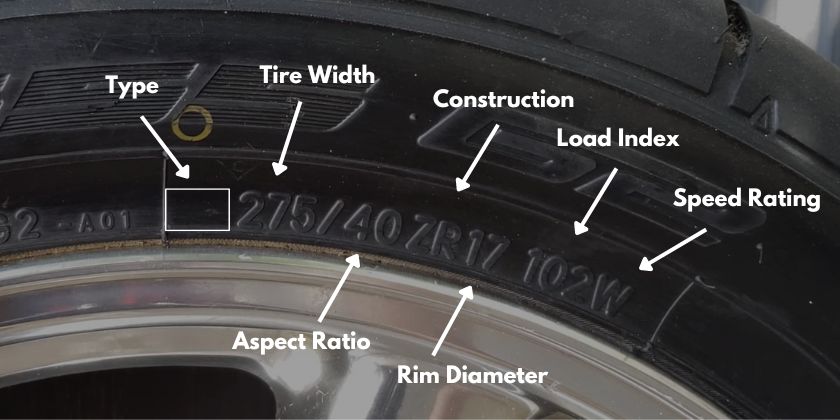
You can skip this section if you know how to read tire sizes. But most people don’t. Therefore, we’ll discuss that before moving on to the actual topic.
When it comes to vehicle tires, there are two size measurements: Metric and Floatation.
We’ll discuss only the metric format as it’s used in Jeep Grand Cherokees and most other vehicles.
The metric tire sizing consists of a string of different characters and numbers, such as LT265/70R17, P225/70R16, and ST205/75R15.
As you can see, this format has five parts.
Tire Type
In the beginning, we have some letters. These letters indicate the tire type, such as P (passenger tire), LT (light truck tire), ST (special trailer tire), and C (commercial tire). If there are no letters in the beginning, it’s a passenger tire.
Section Width
After that, we have a three-digit number, such as 265, 225, 205, etc. These numbers indicate the section width, the distance from sidewall to sidewall, in millimeters. For example, 265 means the tire has a 265mm section width.
Aspect Ratio
Next, we have the slash sign, followed by a two-digit number. This number represents the aspect ratio of the tire. This is the ratio between the sidewall’s height and its width. For example, a 70 aspect ratio means the sidewall’s height is 70% of its width.
Construction
After the aspect ratio, we have another letter, such as R, D, B, or Z. This letter refers to the tire’s construction. The ‘R’ stands for radial construction and is the most common tire type.
On the other hand, D and B stand for Diagonal/bias-ply construction and Belted construction; while Z indicates a high-speed rating.
Rim Diameter
At last, we have another 2-digit number. This number represents the diameter of the rim (in inches) for this tire. For example, the number 20 would mean that the tire is made to be used with a 20-inch wheel.
Load Index
In addition, some tires have a two-digit number at the end, followed by an alphabet letter, i.e., 92H, 91S, 82S.
This two-digit number indicates the load index and represents how much load a tire can handle, with a higher number meaning higher load capacity.
For example, the 82 load index means 475 KG (1047 lbs) capacity, while the 92 load index means 630 KG (1389 lbs) capacity.
For more information on this index, check the image below:
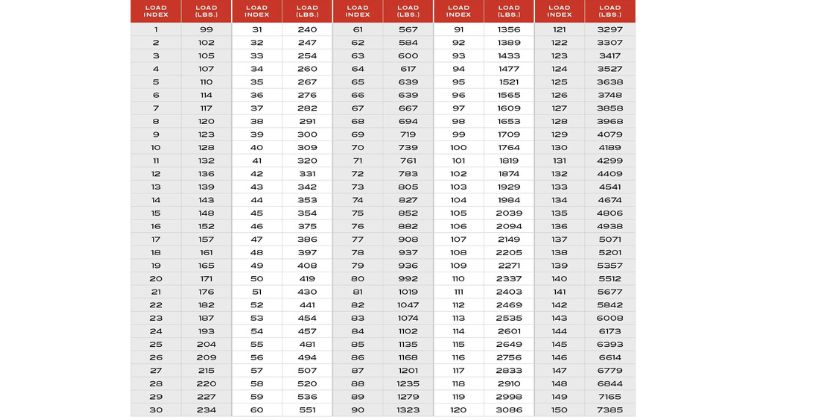
Speed Rating
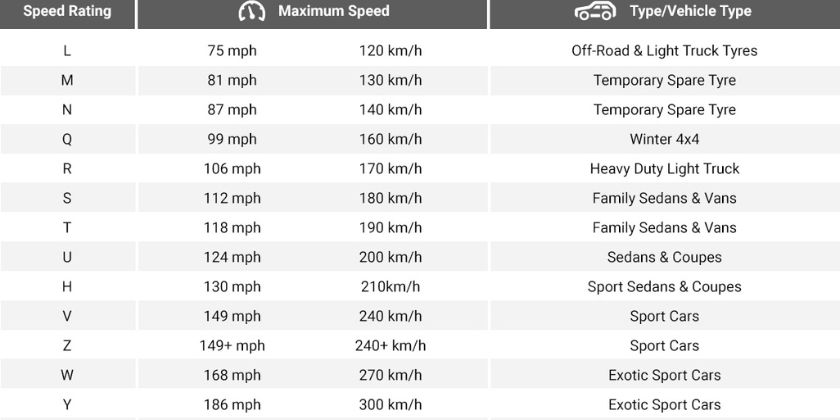
Similarly, the letter after the load index represents the speed rating. It indicates the maximum speed at which any particular tire can safely operate.
For example, the letter S means a max speed of 180 KM/H (112 MPH), while the letter H means a max speed of 210 KM/H (130 MPH).
Stock Tire Size in Jeep Grand Cherokees
The stock tire size is crucial in determining how much headroom you’re left with for bigger tires.
Although Grand Cherokee has many trim levels released every year (with many of them featuring different tire sizes), the most common tire sizes are 215/75R15, 225/75R15, and 235/75R15 in older models.
And 245/70R15, 255/45R20, 285/40R20, 295/45R20, etc. in newer models.
You can check out our Jeep Grand Cherokee tire size guide for more info in this regard.
How to Choose Bigger Tires That Fit Without a Lift Kit?
There are a few considerations you need to take when putting bigger tires in your vehicle without a lift kit or any other modification.
The rim size should remain the same.
Otherwise, the new tires can have clearance issues with the wheel wells and will rub against fenders, suspension components, or brake calipers.
The tire width can be increased, but not more than 10%.
As we’re trying to fit these tires without modifying the vehicle body, we don’t have much headroom to increase the tire width. For example, if your stock tires are 245mm in width, you shouldn’t go beyond the 265 mm mark.
The same goes for tire height. If your stock tires have a 30-30.5-inch size, you can generally install up to 31.5-inch 3rd-party tires.
Usually, you need to do some calculations to find tire height from the metric sizing format.
To help you out, I have added the image below. It has some common tire sizes in metric format and their corresponding height (in inches)
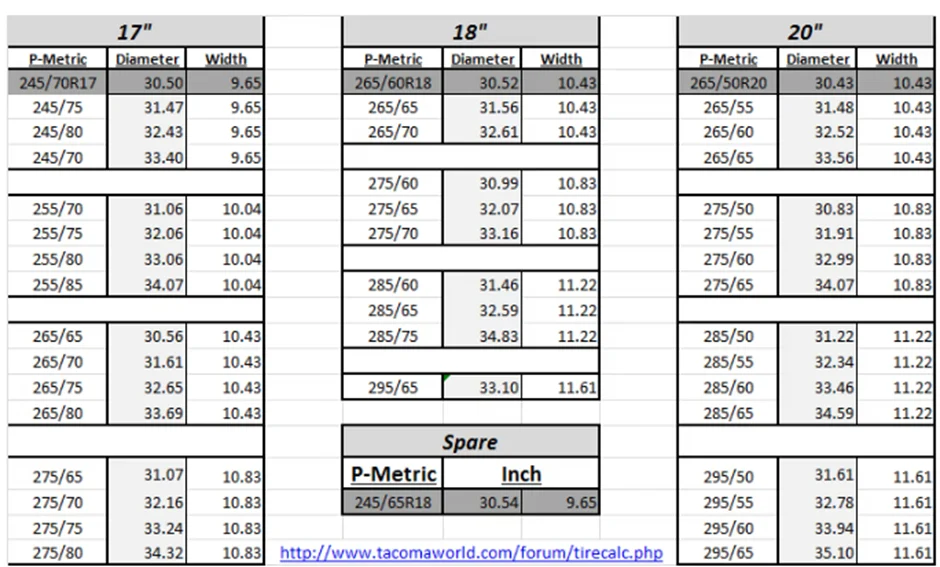
Lastly, there’s no point in getting bigger tires if they cannot support your vehicle’s weight. That’s why you should also check the load index of new tires and make sure they match your vehicle.
Biggest Tire Size For Jeep Grand Cherokee Without a Lift
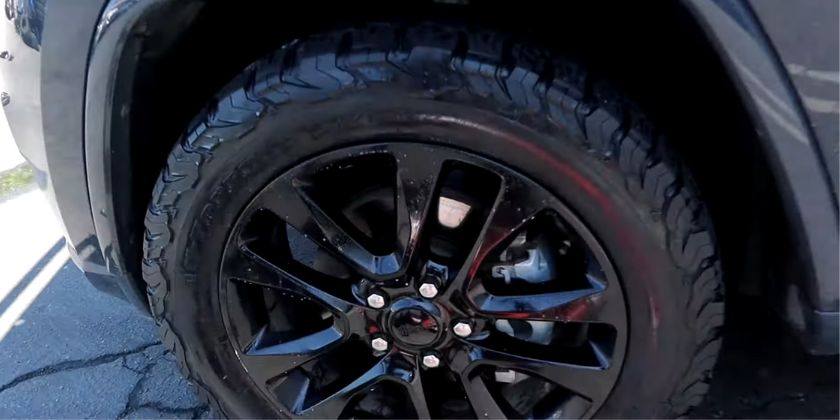
Below are some common bigger tires you can fit into a Grand Cherokee without needing a lift kit or any other vehicle modification.
| Model | Biggest Tire Size Without Lift |
|---|---|
| Jeep Grand Cherokee 1995 (ZJ) | 235/75R15 |
| Jeep Grand Cherokee 1999-2004 (WJ) | 245/70R16, 245/70R17, or 265/75R16 |
| Jeep Grand Cherokee 2005-2010 (WK) | 245/75R17 or 255/70R17 |
| Jeep Grand Cherokee 2011-2021 (WK2) | 285/50R20 or 265/65R18 |
| Jeep Grand Cherokee 2021- (WL) | 285/55R20 |
How to Fit Bigger Tires on Jeep Grand Cherokee Without a Lift?
Even when you follow all the guidelines mentioned above, there can be some cases where new tires would not fit well into the vehicle.
In such a situation, many car mechanics wrongly advise you to trim the wheel studs or bolts.
While it may enable you to fit new tires, trimming these studs can increase the likelihood of wheel detachment – potentially resulting in fatal accidents.
Therefore, you should avoid doing this at all costs.
Instead, we’ll discuss two less risky alternatives that allow you to fit bigger tires without compromising your safety.
1. Trim The Fenders
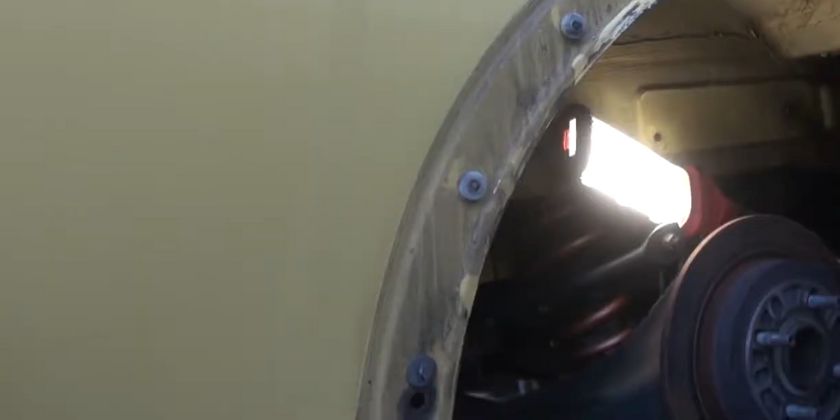
Fenders are the part that covers the wheel wells in a vehicle and are usually the first ones that rub against bigger tires.
Therefore, the first method can try to increase wheel clearance is trimming and modifying the fenders.
It’s a cheap solution but requires careful planning and execution. And can also make the vehicle visually less appealing in some cases.
2. Install the Postive Offset Wheels
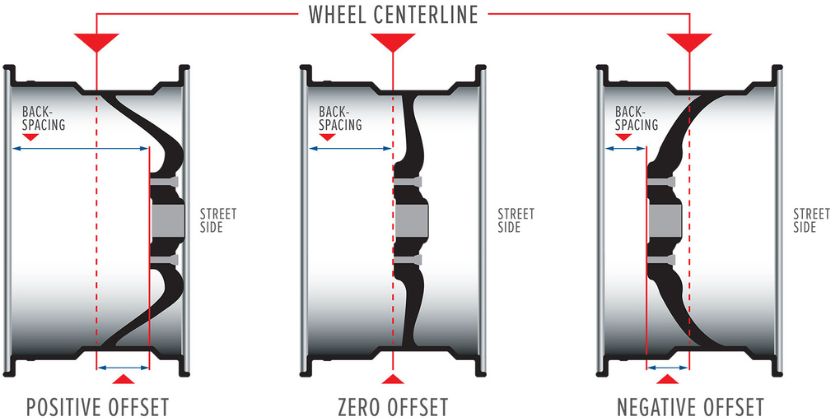
Another way you can prevent rubbing with the fenders is by going with positive-offset wheels.
The wheel offset is the distance between its mounting surface and the centreline, measured in millimeters.
The offset can be both positive and negative.
A negative offset wheel will be mounted away from its centreline, resulting in it sitting outwards of the vehicle.
Similarly, a positive offset wheel is mounted behind the centreline, resulting in it sitting inwards of the vehicle, closer to the suspension system.
When it comes to installing bigger tires, it’s generally recommended to go with slightly positive-offset tires.
These wheels will be mounted inwards and will not come in contact with the fenders when making turns.
Keep in mind that the offset shouldn’t be aggressive as the wheel can come into contact with the suspension system and damage it otherwise.
Are Bigger Tires on Jeep Grand Cherokee Worth It?
Here we’ll discuss some of the common advantages of these tires.
Extra Ground Clearance
The primary reason people opt for bigger tires is better ground clearance. Smaller tires don’t leave much space between the lowermost area of your vehicle and the ground.
While it doesn’t make much difference in city or highway driving, things get difficult when you go off-road.
That’s because low ground clearance can cause the vehicle to come in contact with a rock or any other obstacle on the surface — and damage the undercarriage components, such as suspension, exhaust, differential, etc.
Bigger tires solve this issue by increasing the vehicle height and adding ground clearance.
Better Traction
Another off-roading advantage of the bigger tires is the increased traction.
They have more contact area with the ground due to extra sidewall width, which gives them a better grip on off-road surfaces, such as mud, gravel, rocks, etc.
This extra grip helps you climb steep inclines relatively easily and has better traction on sandy or snowy surfaces.
Improved Stability
The wider contact patch in bigger tires gives them better stability during cornering. That’s because it distributes the lateral forces (generated as a response to the vehicle’s momentum) more evenly on a larger area, which reduces the risk of body roll.
Conclusion
Whatever tire size you go with, make sure to calibrate it with your vehicle.
That’s because the speed and distance a vehicle covers are based on the rotations of the wheels.
When you upgrade to bigger tires, the circumference increases, which means for each rotation, you’ll cover more distance.
However, the sensors will not detect the extra distance because the number of wheel rotations remains the same.
To avoid this problem, recalibrate your vehicle’s electronic systems whenever you switch between regular and bigger tires.
Frequently Asked Questions
Can I Put Bigger Tires On My Jeep Grand Cherokee?
Yes, you can put bigger tires on your Jeep Grand Cherokee. But the size limit of those bigger wheels will vary depending on whether you use a lift kit or not.
What Size Tires Will Fit My Jeep Grand Cherokee?
The 245/70R17, 265/60R18, and 265/50R20 are common tire sizes to fit on Jeep Grand Cherokee, depending on the rim size.
Should All Four Tires Be The Same Size?
All four vehicle tires should have the same size and speed rating. Otherwise, these tires will wear out asymmetrically and can cause handling and braking issues. Also, potential differences in their rotational speeds may cause the ABS not to work correctly.
Are Bigger Tires Harder on Gas?
Bigger tires are harder on gas as they have increased rolling resistance (due to more surface in contact with the ground), which requires more force to be negated. This causes the engine to work harder, resulting in more fuel consumption.
Are 33-inch Tires The Same As 285?
The 285 is a metric size that may or may not equal a 33-inch tire, depending on its aspect ratio.

